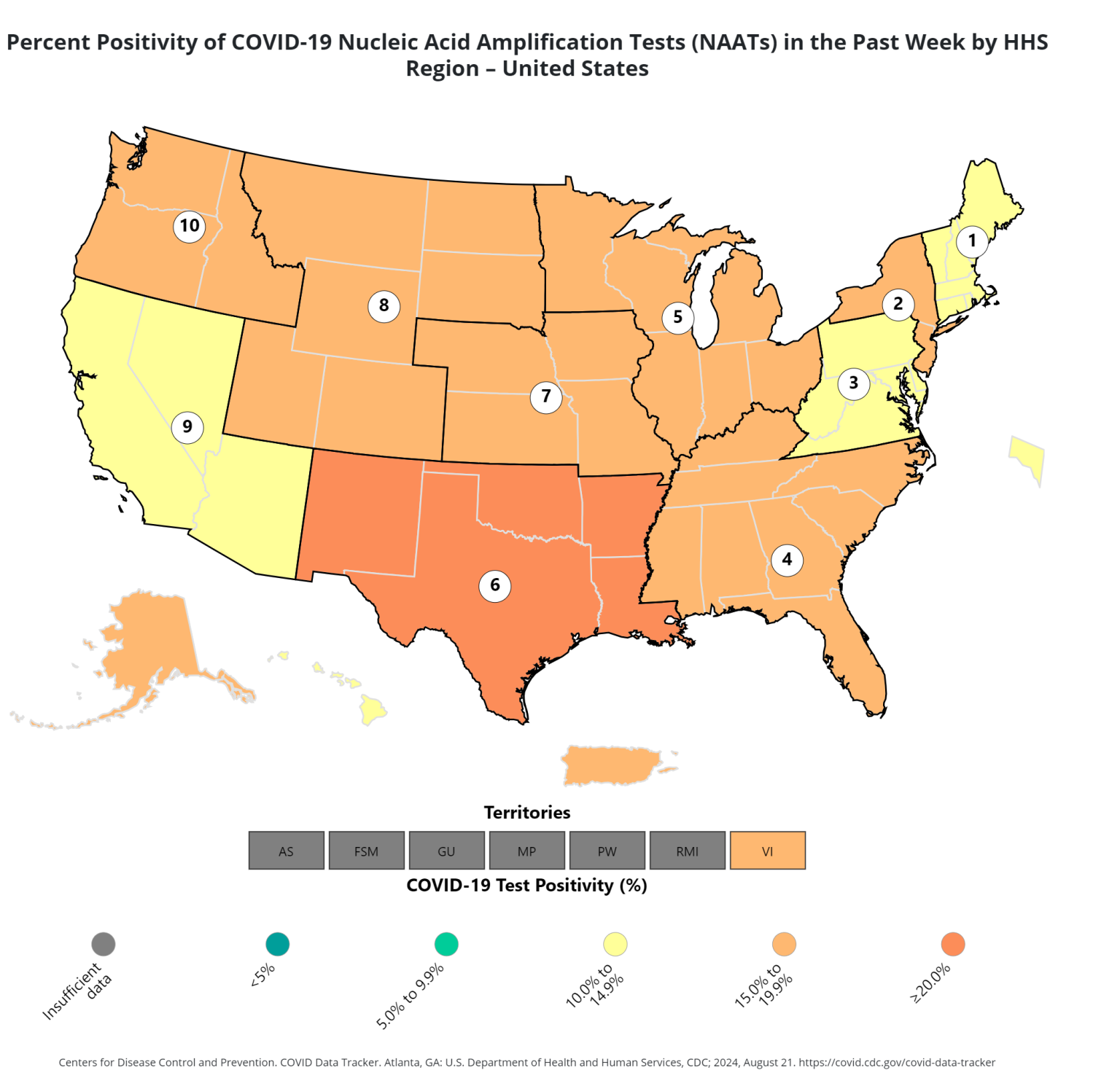COVID cases continue to rise across the U.S. as the new KP.3.1.1 variant spreads, with the highest rates of infection found in five Southern/Southwestern states. The new Omicron subvariants, dubbed “FLiRT,” are now predominant in more than 75 percent of U.S. infections. For the week ending August 10, the CDC reported that nearly 1 in 5 COVID tests were positive, with the highest percentage seen in region six, followed by regions seven and five.
The distribution of positive tests across the U.S. has been uneven, with Southern states experiencing the highest infection rates. Region six, including Arkansas, Louisiana, New Mexico, Oklahoma, and Texas, reported the highest percentage of positive tests at 23.8 percent. Region seven and region five also reported high positive test rates. In contrast, region four, covering Arizona, California, Hawaii, and Nevada, had the lowest infection rates at 13.2 percent. Wastewater surveys across the country have shown “very high” levels of COVID-19 detection.
Despite the rise in infections, hospitalizations across the U.S. remain relatively low. The FLiRT variants, though more infectious, generally do not cause severe symptoms. It is important for individuals to isolate themselves if they develop symptoms. The CDC continues to monitor the situation closely and provide updates on the spread of COVID-19 and new variants. If individuals have health concerns, they are encouraged to reach out for advice and support.
Overall, the U.S. is facing a surge in COVID-19 cases due to the spread of the KP.3.1.1 variant and other Omicron subvariants. The uneven distribution of positive tests across the country highlights the need for targeted efforts in regions experiencing higher infection rates. While hospitalizations remain low, it is crucial for individuals to follow public health guidelines and isolate if they develop symptoms. The CDC’s monitoring of wastewater surveys provides valuable data for understanding the extent of COVID-19 spread.
As the pandemic continues, the U.S. healthcare system is facing challenges in managing the rising number of COVID-19 cases. The emergence of new variants like FLiRT underscores the importance of ongoing surveillance and research to address evolving threats. By staying informed and following public health guidance, individuals can contribute to efforts to reduce the spread of COVID-19 and protect vulnerable populations. Collaboration between government agencies, healthcare providers, and the public is essential in the fight against the pandemic.


